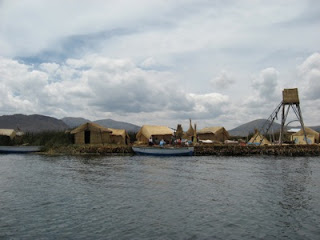Bollywood Popularity?
On my long bus ride between Nazca and Cusco, one of the movies shown onboard was a Bollywood movie, with Spanish subtitles. It was a highly convoluted romantic story, and I didn't watch much of it. And most of the passengers on my level of the bus also seemed to be asleep for most of the movie. That raises the question of why that movie was played? The streets of Peru are filled with pirated movies, and since the bus ride, I have paid more attention to the type of movies on sale. Most of the movies are Hollywood movies, and apart from a few Chinese blockbusters (like Hero) I have yet to see any "foreign" movies. In hindsight, I should have just asked the purser on the bus ...
Cusco Ticket Usefulness
In my post on Cusco, I commented on the apparent uselessness of the Cusco ticket beyond visiting the ruins. Just before leaving Cusco, I had the opportunity to use up one more of the attractions: a showcase of regional dance and music, at the cultural centre. This is certainly a cultural highlight of the ticket, and worth a lot more than the museums in my opinion. The fact that the show takes place at 7pm, is also a bonus.
Getting Ripped Off (1)
John and I paid 30 Soles (10 US $) for our bus between Cusco and Puno. It was a rackety bus, with the reclining seats being the only redeeming feature of the bus. There were a three other tourists on the bus, and they paid between 40 and 45 US Dollars each for the bus ticket, which they bought from a travel agent in the town. This is particularly surprising as I had also investigated various options for the bus ticket, and no one quoted more than 45 Soles for the ticket. I am also surprised that they did not check around before buying bus tickets. 45 US $ is a lot of money for a bus ticket - the most I have paid is 30 US $ and that was for a very good seat on a very long trip (Nazca to Cusco).
Getting Ripped Off (2)
Foreign exchange controls in Peru are very lax, and US Dollars can be used to pay for goods and services and money exchangers are common in most towns and cities. It is here that I got ripped off, when one of them short changed me by 50 Soles. Oh well ... let leave and learn.
How the poor travel
The bus ride between Cusco and Puno ride was also a demonstration on how the poor travel. A mother and her two kids (a young girl of around 9 and a baby) bought one seat. The young girl was well prepared: she took out a few blankets, put them up against a corner and sat down for the ride. They were well prepared and it seems that this is a common occurrence as the bus conductor did not make a single comment!




























